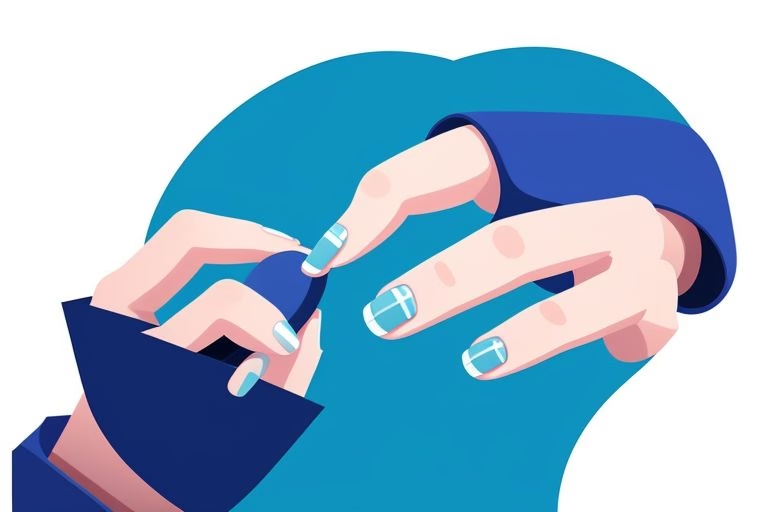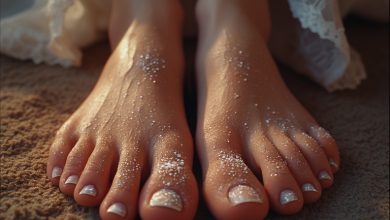
What Does It Mean If Your Finger Nails Are Turning Blue?
Ever looked at your hands and thought, “Wait, why are my fingernails turning blue?” Don’t panic, but don’t ignore it either. Blue fingernails—also called cyanosis—can be your body’s way of waving a red flag. Sometimes it’s harmless. Other times, it could mean something way more serious.

In this article, we’ll break down 7 shocking causes of fingernails turning blue, how to spot them, and most importantly—how to treat or prevent them before they become a bigger problem.
1. Low Oxygen Levels in Your Blood
Yes, it’s as scary as it sounds.
The most common cause of blue fingernails is low oxygen levels in your blood. This condition is medically known as peripheral cyanosis. Your blood isn’t carrying enough oxygen to the tips of your fingers—hence the change in color.
Why it happens:
-
Lung diseases like COPD or asthma
-
Heart conditions that reduce blood flow
-
Exposure to cold environments
👉 According to Mayo Clinic, cyanosis can be a symptom of a medical emergency if it comes on suddenly.
What to do:
-
Seek medical help immediately if you’re having trouble breathing.
-
Use a pulse oximeter to check your blood oxygen levels at home.
-
If you have known lung or heart conditions, talk to your doctor.
2. Cold Temperatures Can Restrict Blood Flow
Ever walked out into freezing weather and noticed your fingernails turning blue? That’s your body protecting your core by sending less blood to your extremities.
But here’s the kicker:
If your nails stay blue even after you warm up, there could be an underlying issue.
What to do:
-
Warm your hands with gloves or warm water.
-
Avoid direct exposure to cold.
-
If your nails stay blue for over 15 minutes, contact a healthcare provider.
3. Raynaud’s Disease: A Common Yet Overlooked Condition
Raynaud’s disease is a circulatory issue where small arteries in your fingers spasm, reducing blood flow. It’s more common in women and often triggered by cold or stress.
Symptoms:
-
Blue or purple nails
-
Tingling or numb fingers
-
Color changes in your fingers (white, then blue, then red)
Check out this guide from Cleveland Clinic for more about Raynaud’s disease and how to manage it.
4. Iron Deficiency Anemia
Not eating enough iron-rich foods? That could be the reason behind your fingernails turning blue. Iron deficiency anemia affects your blood’s ability to carry oxygen.
Other symptoms to look for:
-
Fatigue and dizziness
-
Pale skin
-
Brittle nails
How to fix it:
-
Eat iron-rich foods like spinach, red meat, lentils, and eggs.
-
Try iron supplements (ask your doctor first).
-
Get a blood test to confirm anemia.
5. Lung or Heart Disease Could Be Lurking
This one’s serious. Chronic conditions like pulmonary hypertension, congestive heart failure, or even blood clots can cause blue fingernails.
If your nails are consistently blue, it might mean your circulatory system is compromised.
Warning signs:
-
Shortness of breath
-
Swollen ankles
-
Chest pain or tightness
-
Fatigue
Take action:
Don’t wait. If you notice more than one of these symptoms, get a full check-up immediately. A proper diagnosis could literally save your life.
Read more about heart-related causes on American Heart Association.
6. Medication Side Effects Can Turn Nails Blue
Believe it or not, certain medications can cause fingernail discoloration as a side effect.
Common culprits:
-
Amiodarone (used for irregular heartbeats)
-
Minocycline (an antibiotic)
-
Some chemotherapy drugs
If you’ve recently started new meds and notice your fingernails turning blue, talk to your doctor immediately.
Don’t stop taking your meds without professional advice—but do ask about safer alternatives.
7. Carbon Monoxide Poisoning: A Silent Killer
You might think it only happens in old buildings or faulty heating systems—but carbon monoxide poisoning is more common than people think.
And yes, one of the early signs is blue fingernails.
Other symptoms:
-
Headaches
-
Dizziness
-
Nausea
-
Confusion
Important: If more than one person in your home is feeling these symptoms, get out immediately and call emergency services.
More info from CDC on Carbon Monoxide Poisoning
When Should You Worry About Blue Fingernails?
Here’s a quick checklist:
✅ Is it happening all the time, or just occasionally?
✅ Are you also feeling dizzy, short of breath, or tired?
✅ Are you taking medications or living in a cold climate?
✅ Do you have known lung, heart, or blood conditions?
If you answered yes to any of these, it’s time to call your doctor.
How to Prevent Fingernails From Turning Blue
Let’s shift gears. Here are simple, proactive ways to keep your nails (and body) healthy:
✅ Stay Warm:
Wear gloves in cold weather. Keep your core and extremities insulated.
✅ Eat a Balanced Diet:
Iron, B12, and folate are essential for healthy nails and blood flow. Try foods like:
-
Eggs
-
Lean meat
-
Leafy greens
-
Nuts and seeds
✅ Stay Active:
Physical activity improves circulation. Even a daily walk helps!
✅ Don’t Ignore Symptoms:
If you notice your fingernails turning blue, don’t brush it off. The earlier you catch the cause, the easier it is to fix.
Natural Remedies You Can Try At Home
While medical care is critical, here are some natural remedies to try in the meantime:
🌿 Ginger Tea:
Improves blood circulation and keeps your extremities warm.
🌿 Ginkgo Biloba:
Some studies suggest it can enhance blood flow and oxygen delivery.
🌿 Deep Breathing Exercises:
Boost your oxygen levels and help reduce stress—a win-win.
Read more about natural circulation boosters here.
The Bottom Line
If your finger nails are turning blue, it’s your body saying “Hey, something’s off!” Don’t ignore it. Whether it’s the cold, low oxygen levels, anemia, or something more serious like heart disease, your body is trying to tell you something important.
💡 The key takeaway? Don’t wait. Start by tracking your symptoms, improving your diet, and consulting a doctor. Prevention is always better—and easier—than cure.
Quick Recap: 7 Common Causes of Blue Fingernails
| Cause | Quick Fix |
|---|---|
| Low oxygen levels | See a doctor immediately |
| Cold temperatures | Warm up, wear gloves |
| Raynaud’s disease | Avoid cold and stress |
| Iron deficiency anemia | Eat iron-rich foods or take supplements |
| Heart/lung disease | Full medical check-up |
| Medications | Ask your doctor about side effects |
| Carbon monoxide poisoning | Evacuate and call emergency services |
Still Worried? Here’s What You Can Do Right Now
✅ Book a health check-up (don’t delay!)
✅ Start eating more iron-rich and oxygen-boosting foods
✅ Keep a symptom diary to share with your doctor
✅ Stay updated on your health—follow trusted sources like WebMD and Healthline
Final Words
Your hands say a lot about your health. So if your fingernails are turning blue, listen up. Whether it’s a temporary issue or something bigger, taking action today can prevent serious health problems tomorrow.
Thanks for reading—and take care of those fingertips!
Liked this post? Share it with friends and family—it might help someone spot a hidden health risk just in time. ❤️



